Day 18
Lovage (Levisticum officinale) is a hardy herbaceous perennial herb. I think it was the tallest it has ever been this summer past… at around 2m. It was going all over the place so I cut it back in autumn. I like seeing its bright pink-red shoots in spring and love watching the fresh young leaves unfold. When stems are about 30cm long I harvest some and make a spicy soup. Lovage soup has a curry-like flavour and is one of the spring dishes I look forward to.
In spring I use the leaves until the flower stems begin to show when the flavour becomes less intense. The flower stems grow to about 2m and I usually leave them to flower and seed. They are great pollinator attractors and later birds seem to go for the seeds.
Sometimes I cut a section back - I do have a lot of lovage- to get a second flush of leaves for soups, salads and casseroles.
Day 19
I love the common names of this herb - stridolo or sculpit while Silene inflata is its Latin name. I sowed seed from Seeds of Italy aka Franchi seeds some years back and have had it in profusion ever since. You could say it is so well-established that it is now trying to take over the raised bed it is in. I do pull it out by the handful after flowering to prevent excessive self-sowing. It is a perennial that spreads by self-seeding and clumping up.
The leaves come into their own now in winter and also in spring when there is not a great deal to choose from in the fresh herb and salad department in the garden. They offer a lightly spicy flavour, with a slightly bitter edge to them and a springy texture. In summer the pretty blooms with veined, balloon-like shapes appear. They are good in salads, omelettes and risottos.
Day 20
You could say mint is me! I have loved mint (Mentha species) all my life... ever since I crawled down our garden path and found the mint plant growing at the base of our leaking garden tap. The mint loved being in this moist place and grew well. I loved nibbling the leaves straight from the plant.
My Scots grannie made the best mint sauce, the tasty accompaniment to any lamb or mutton dish in our house. Pick the leaves when you want to use them, before flowering the flavour is at its best. Mint with new freshly picked peas is sublime, or use it with new potatoes, in sweet dishes or as a garnish with strawberries. Good with chocolate and to flavour ice cream and sweets. It is particularly great with summer berry fruits.
Mint is a tough hardy perennial with a creeping root and strongly aromatic leaves & mauve flower spikes in summer. It does best in a moist site in shade but will grow in most conditions.
So which mint to choose? Or grow as many as you can. But keep them separate as the individual flavours may dissipate.
The range is huge and there are several specialist herb nurseries where you can find them including Jekka’s, Norfolk Herbs, Pepperpot Herbs and Urban Herbs.
Mentha spicata/ Moroccan spearmint is used as a tea or tisane. Mentha suaveolens/applemint with furry leaves has an apple flavour. Also attractive in salads is variegated apple mint, M. suaveolens ‘Variegata’. Mentha x piperita f. citrata'Lemon' is a lemon mint which I use with chicken, fish and fruit dishes. Eau-de-cologne mint has a perfumed lemon scent and purplish tinged leaves and stems. Mentha x gracilis ‘Variegata’/ginger mint has a fruity, ginger flavour.
I take root cuttings or divide plants in spring or autumn. A slip will root quickly in water.
I made chocolate mint leaves a few years back following instructions from mint expert and former herb grower, Kim Hurst of the now retired Cottage Herbery Make sure the mint leaves are clean, clear of any pests and dry. Kim uses Chocolate, Peppermint, Swiss, Grapefruit, Strawberry, Tashkent or Lavender and Lime mint leaves. She melts a whole bar of dark 70% chocolate and when this is liquid, dips leaves individually into it, covering about a third of the leaf. Then she lays them on greaseproof paper on a plate to dry. When dry they go in to the fridge in an air-tight container until needed.
Day 21
Winter savory (Satureja montana) and summer savory (Satureja hortensis) or the bean herb as it is often used to cook broad beans and other beans (see below).
Winter savory is a hardy, evergreen, low-growing sprawling shrub with branches that spread over the edge of a raised bed or container. It thrives in full sun in well-drained soil. Its leaves are small and pointed with a spicy aromatic flavour and it flowers in late summer to autumn with a mass of small pinkish white blooms. I use its leaves as a seasoning for long and slow cooked dishes and I have found the tips of the flowering stems are useful to soothe insect stings and bites. In my garden it has spread around 50cm over eight years.
Summer savory is a half-hardy annual that can reach a height of 30cm in flower and 20cm spread. It will grow bushier if the growing tips are nipped out. In many cuisines in Europe this is used in just about every dish cooked with beans. Broad, green or other beans such as haricot or canellini beans are enhanced if summer savory is added to the water when you cook them.
I sow seed outside when frosts have finished or I sow in plug-trays and transplant when soil has warmed up. The whole plant is aromatic but use leaves before the white or mauve flowers appear.
Day 22
Sometimes called the ‘sweet herb’ or the ‘candy herb’, Stevia rebaudiana is definitely the sweetest leaf of them all. It has a long history as you can see from the information board at RHS Hyde Hall, where it is growing in the World Vegetable Garden.
I have been growing it for several years, usually buying plants from Pepperpot Herbs. They grow well in my raised herbs beds in a well-drained, rich soil. I harvest leaves in late autumn as the sweetness intensifies as the temperature cools. However, the plants are not frost-tolerant so I take cuttings during the summer and grow them on, placing them and the original plants in the greenhouse overwinter. Most advice is to dry the leaves and then crush them to use.
However, I make a stevia liquid by adding a quantity of leaves to just boiled water. I let it simmer for a few minutes, then allow it to cool. Once it is cool I pour the liquid minus the leaves into ice cube blocks and freeze them for later use. I add one or two green ice-cubes to rhubarb or other fruit dishes that need sweetening. Stevia has no calories and as it is so sweet I use it as a natural sweetener. You can buy ready-made processed stevia sugar and other products but I prefer to use my homegrown sweet leaves. Just taste a leaf and you will know how sweet it is!
Day 23
Lemon grass (Cymbopogon citratus) is the fresh flavour hit that I need just now. Lemons and oranges have always offered that shot of spiky zest that my palate needs to counteract the richness of most people’s favourite festive food. Lemon grass provides that and I specially love it in spicy laksa-style soups. It is a tender perennial in temperate climates that grows to 1.8m tall in a clump when it can be grown outdoors. As it is a tropical plant it needs to be warm all the time. If I grow it outdoors in summer I plant it in a rich moist soil in in full sun, but usually it stays in the greenhouse and overwinters there as well. I cut and use pieces of leafy stalk when I need them. I chop young leaves into salads and use when I am making a dish that needs a little zingy oomph!
I grew my original plants from supermarket-bought lemon grass sticks/stalks which developed roots in water. Then I potted them up and now each year I divide and trim the plants in the pots. There is always a lot of grassy thatch that needs to be cut off and discarded. But the result after dividing is that I have several new plants.
Day 24
Top herb for me is basil (Ocimum basilicum). My first published article about basil was in the Royal Horticultural Society publication The Garden (Volume 122 /Part 4, April 1997). Entitled ‘A taste of the Mediterranean’ and in it I explored how basil was celebrated internationally in the kitchen for its strong flavouring and was available in a variety of leaf colours, textures and shapes as well as aromas. The article gave me the opportunity to write about the long history of basil and how it came into our gardens and kitchens. Now basil is so easily available especially from supermarkets, so it is hard to believe that in the 1950s the cookery writer Elizabeth David in her book Italian Food commented that it was difficult to find basil for sale. The photographs that accompanied my text were styled and taken by my friend, award-winning photographer Derek St Romaine and the basils were all grown from seed by me.
I grow it to produce pesto, that spicy green sauce that goes so well with many dishes but particularly pasta. During Lockdown I followed a suggestion from a Rome-based cookery superstar Carla Tomasi for freezing it into blocks and using shards of it in sauces and casseroles, rather than taking it all the way to pesto. It is quite a lot of fun smashing it into shards too. I love it with tomatoes for a salad. I think basil is best used freshly picked, but it can be frozen in leaf form or in made-up sauces.
I sow seeds in spring under protected and heated conditions or I buy pot grown plants in late spring or early summer. The pots from supermarkets are good value as they can be divided and many plants made from one pot!
The range - there are so many different types of basil - some with small leaves, frilly-edged leaves, large leaves, purple and purple-frilled. The flavours range from aniseed through to cinnamon and the sweet, spicy, clove-like scent of sweet basil.
Ocimum basilicum ‘Purpurascens’ has purple leaves and pinkish flowers while O. basilicum ‘Citriodorum’ is lemon-scented, has green leaves and white flowers. Fine-leaf or Greek basil packs a powerful aroma punch and there is also a frilly-edged purple form, which enlivens my salads in summer. ‘African Blue’ is a perennial but needs winter protection here, so I overwinter it from year to year in my frost-free greenhouse or sometimes in the house. I take cuttings from the main plant, strike them in a glass of water and when they have formed roots, pot them up. My latest basil ‘squeeze’ is a variegated one called ‘Pesto’, which came to me from Pepperpot Herbs.
I know some find basil has an overwhelming aroma but for me it is a herb that makes herb growing a heavenly pursuit.
And this is the herb advent wrap! Thank you for liking and commenting and for keeping me company in my herb garden and kitchen as we gain more and more light now that we are past the shortest day of the year.




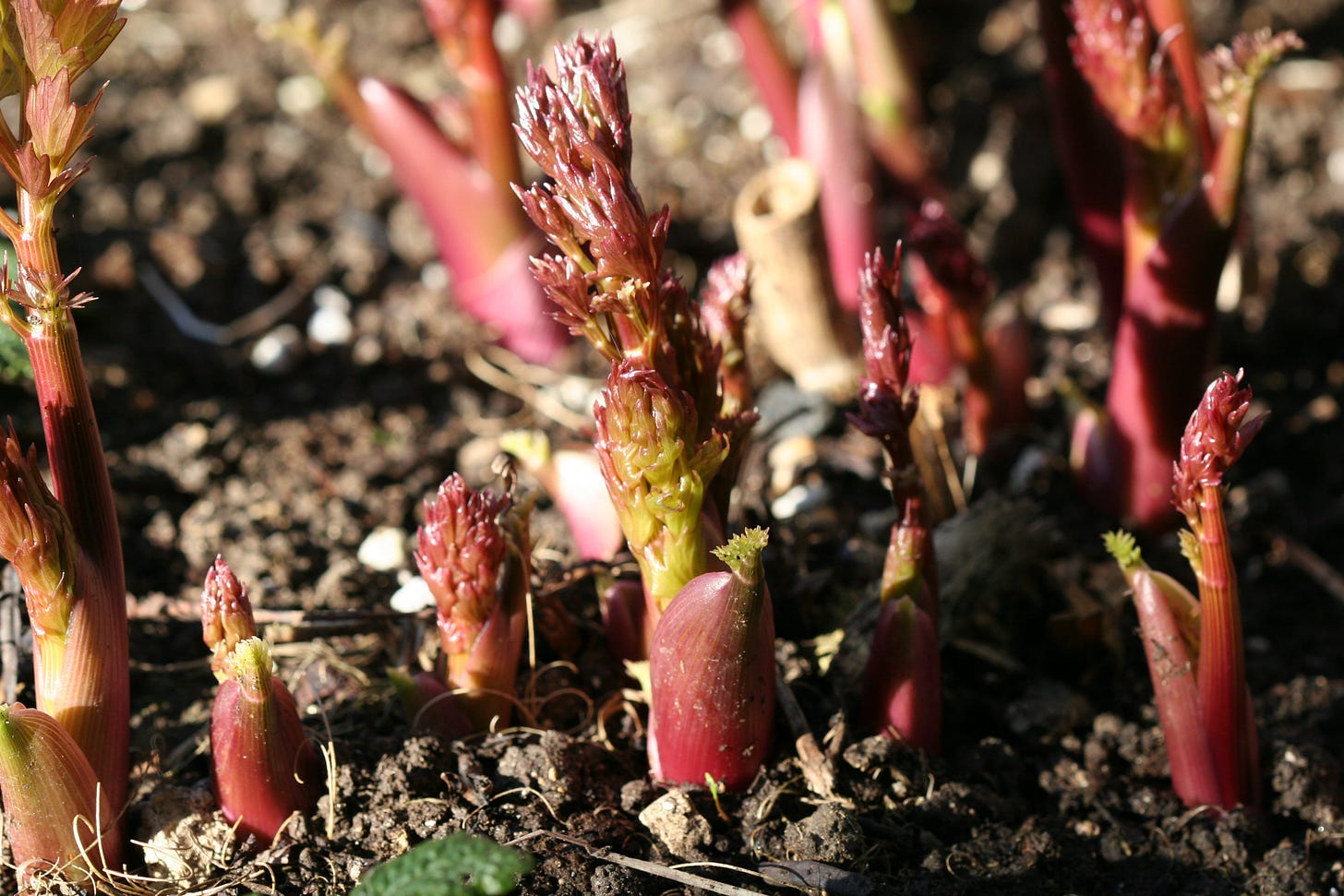

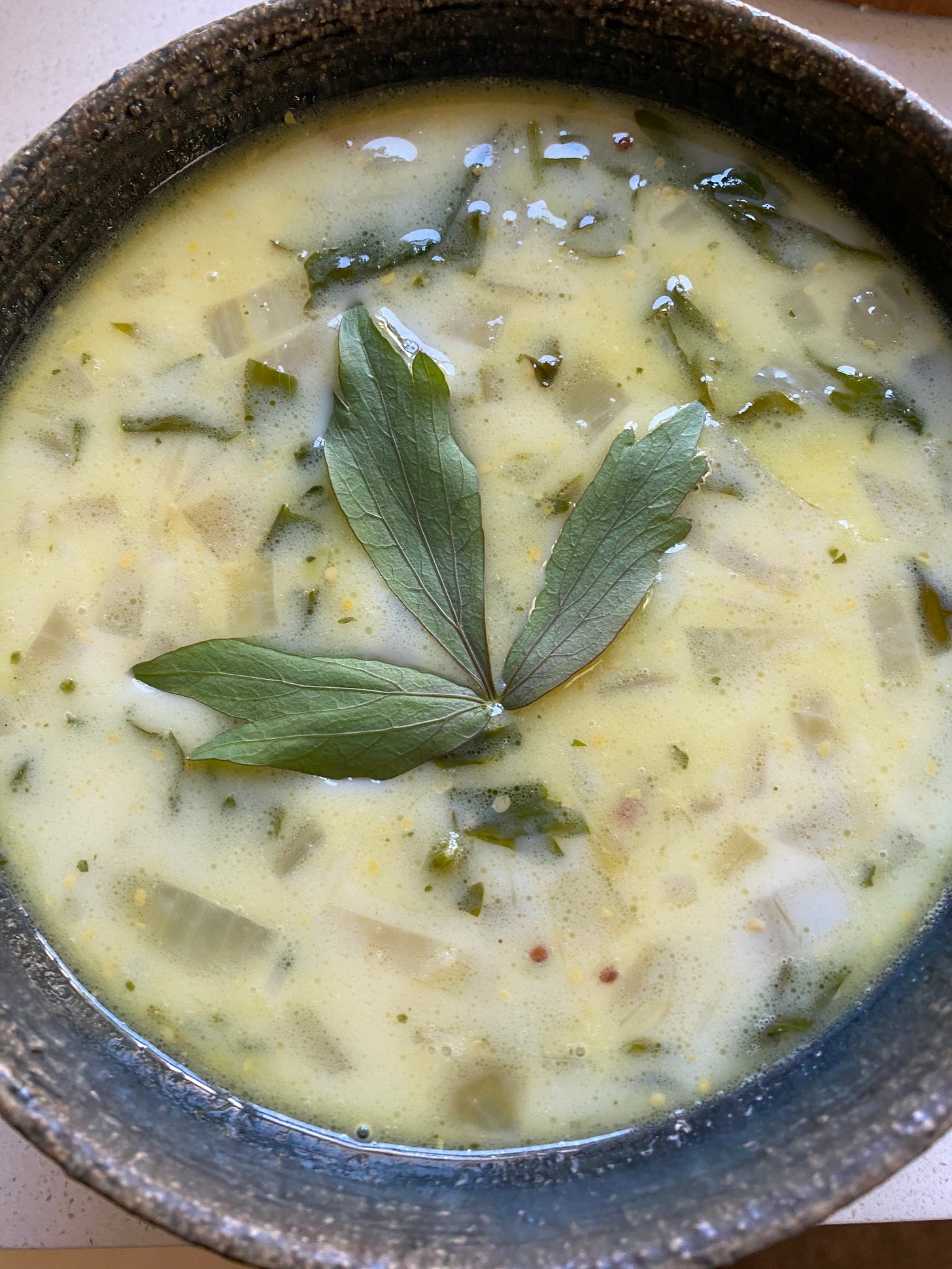

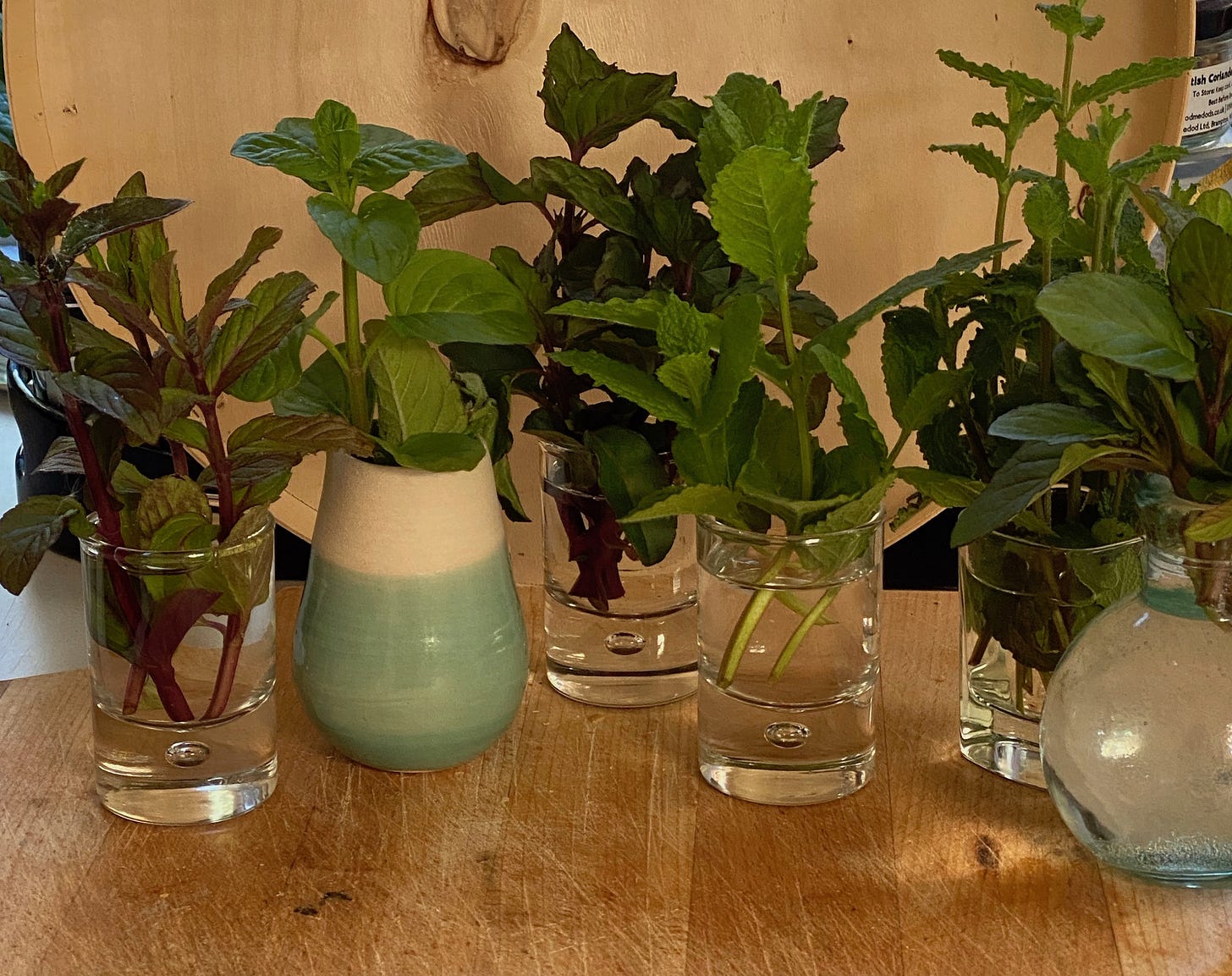

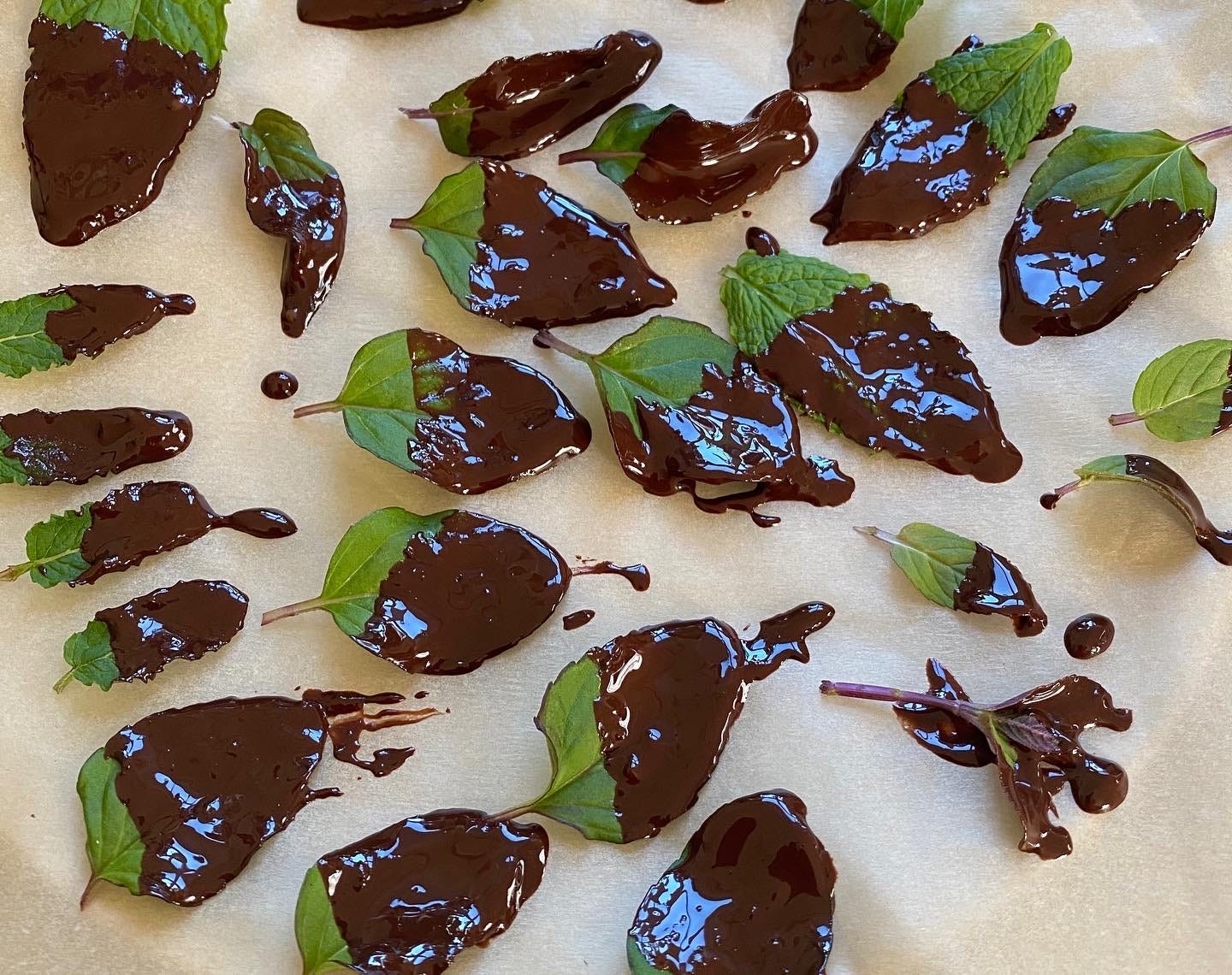



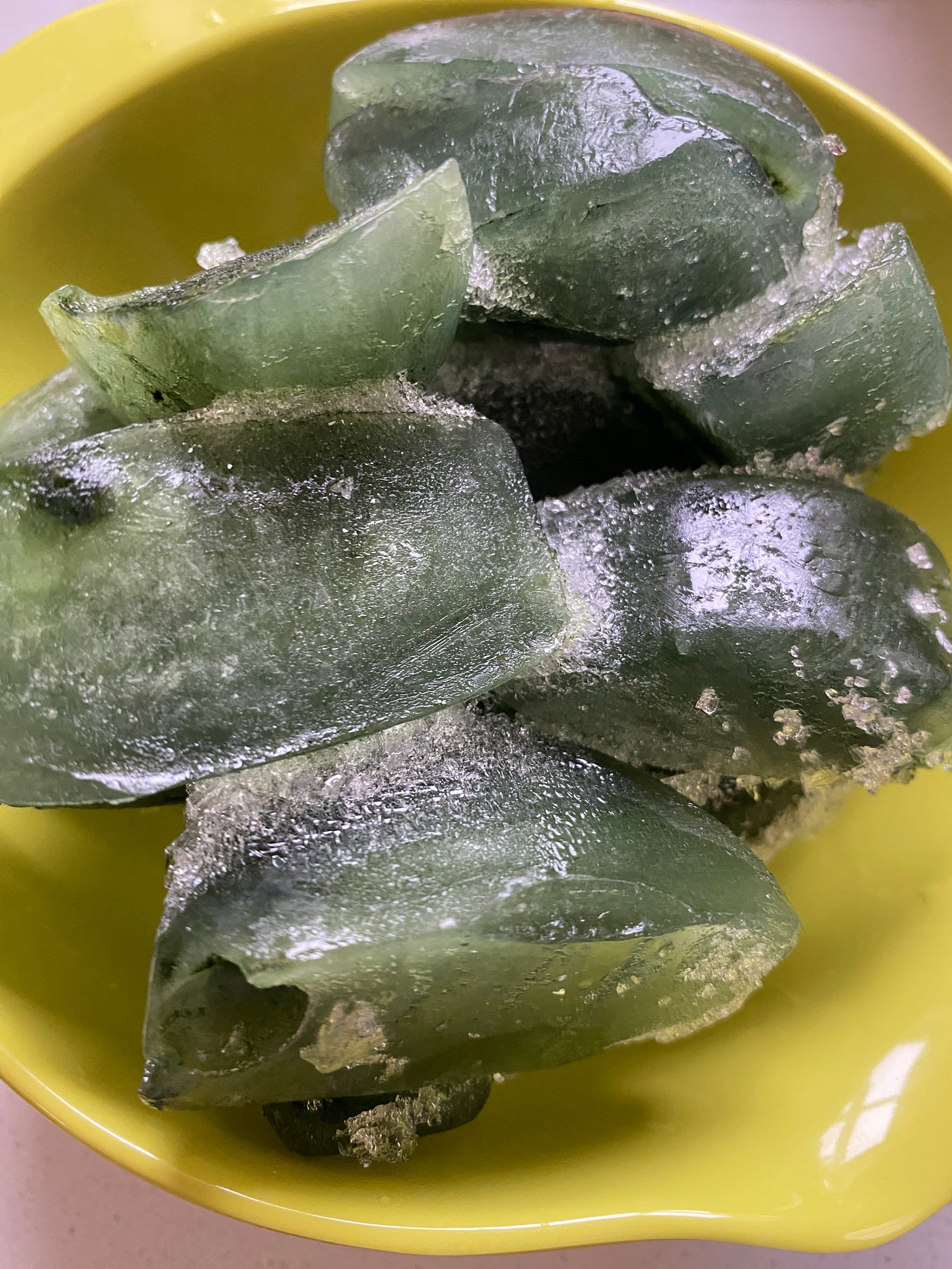
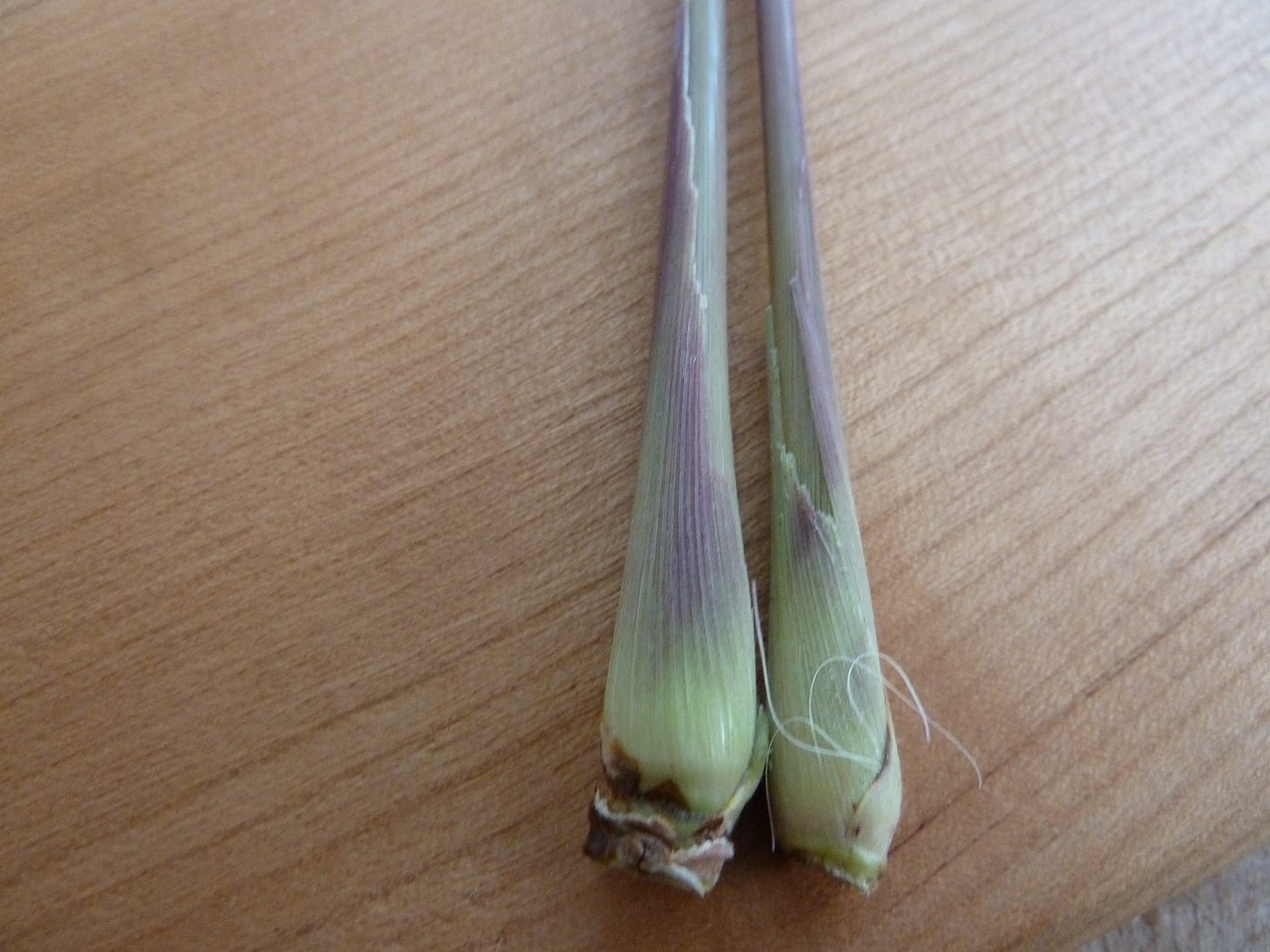
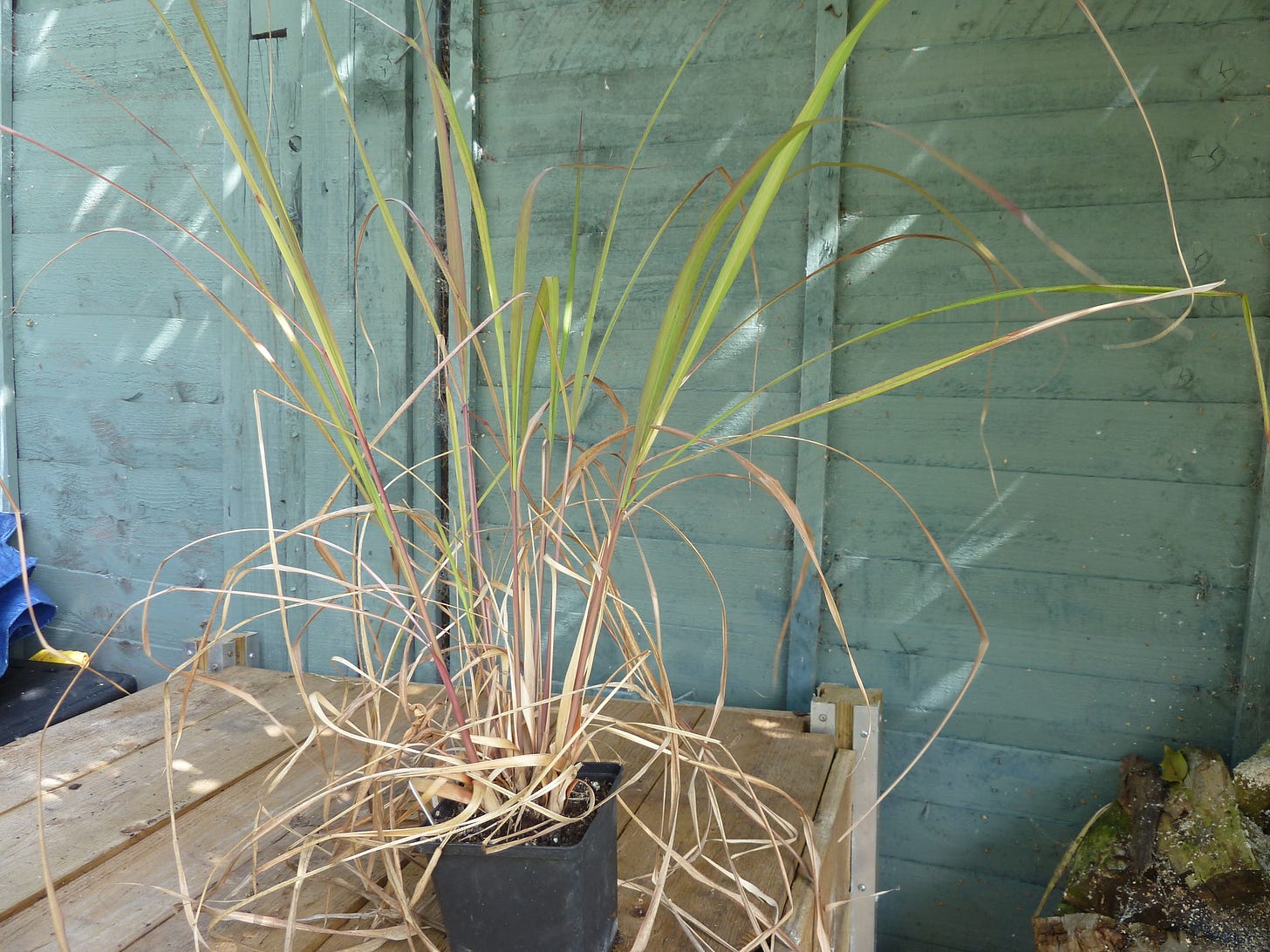


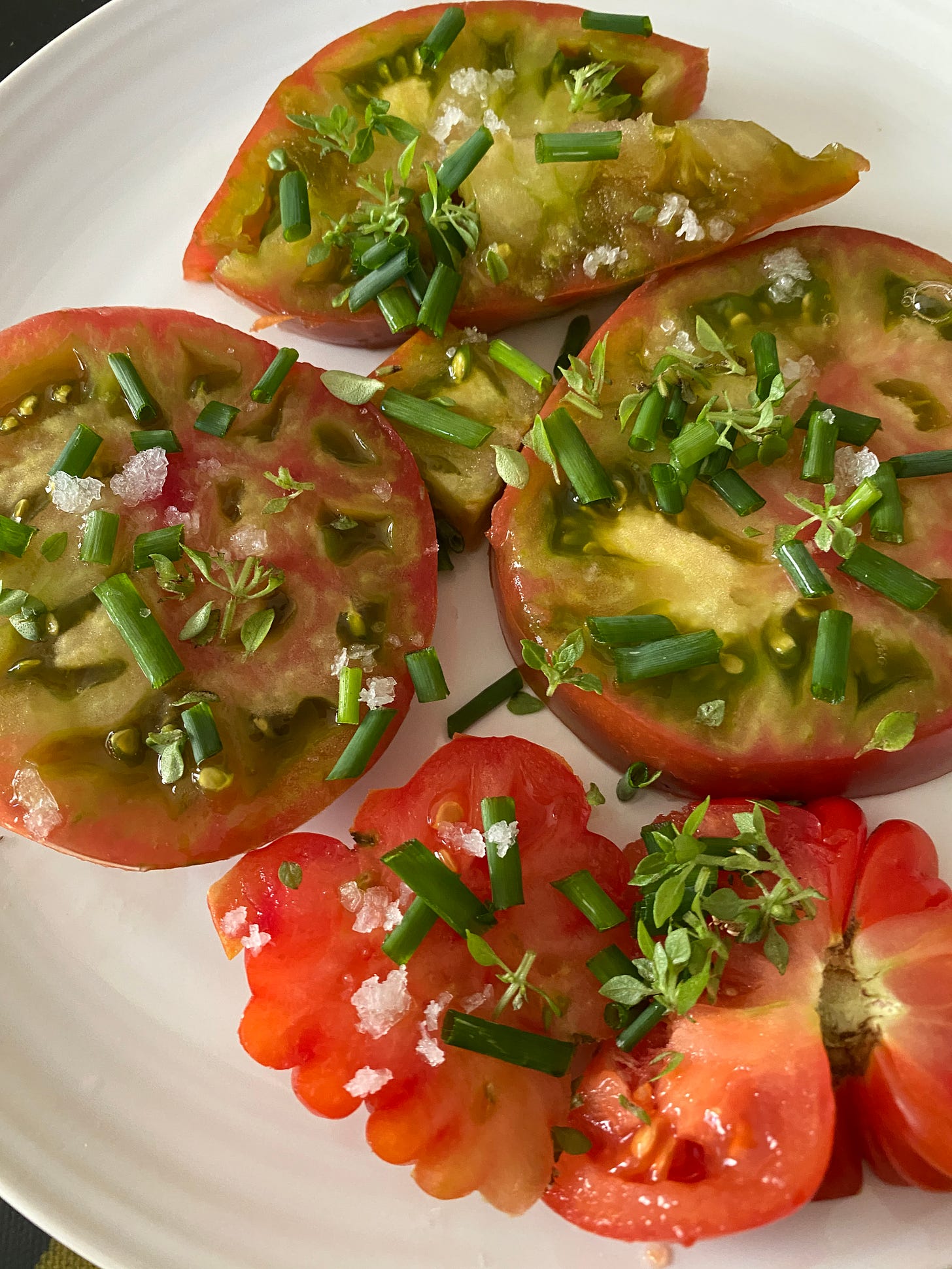

When the plants start to shoot in spring I will divide and pot one or two up for you... and we could meet for a lovage handover! Wishing you a happy new year!
Love your writing and your knowledge sharing Barbara.